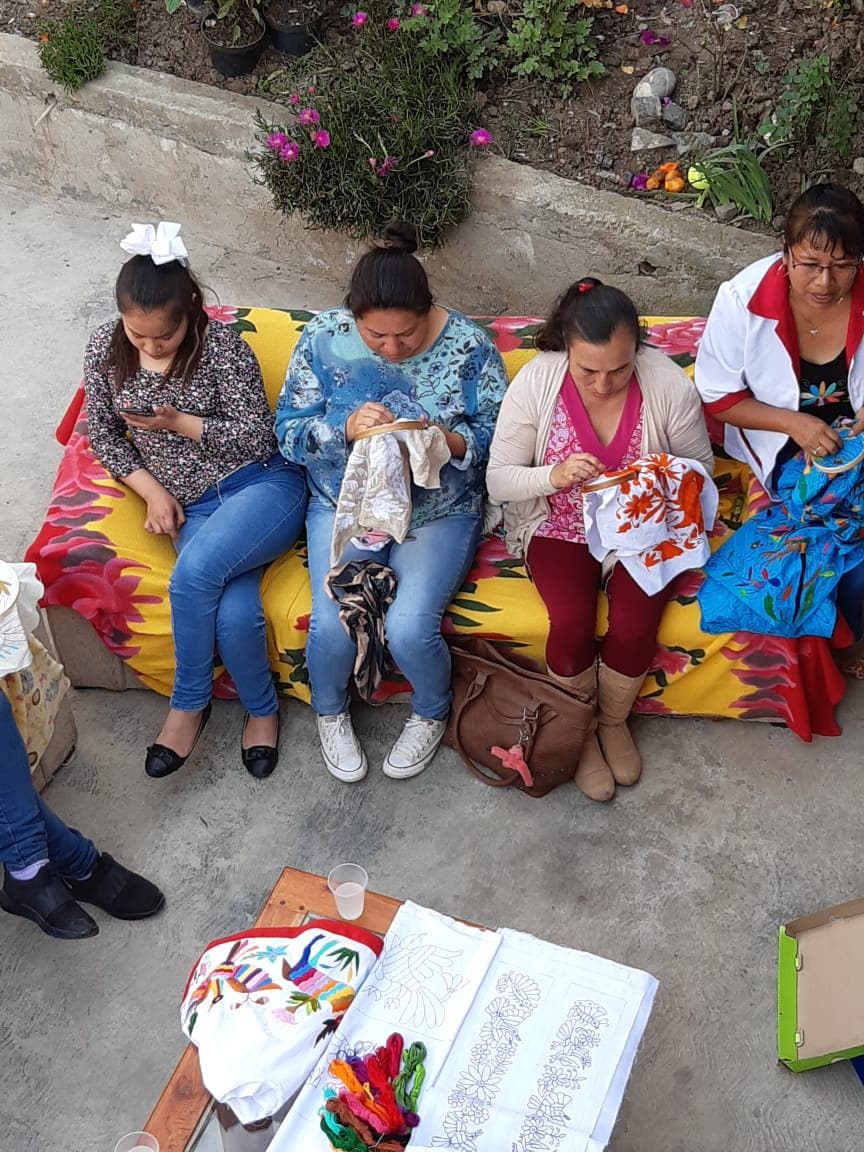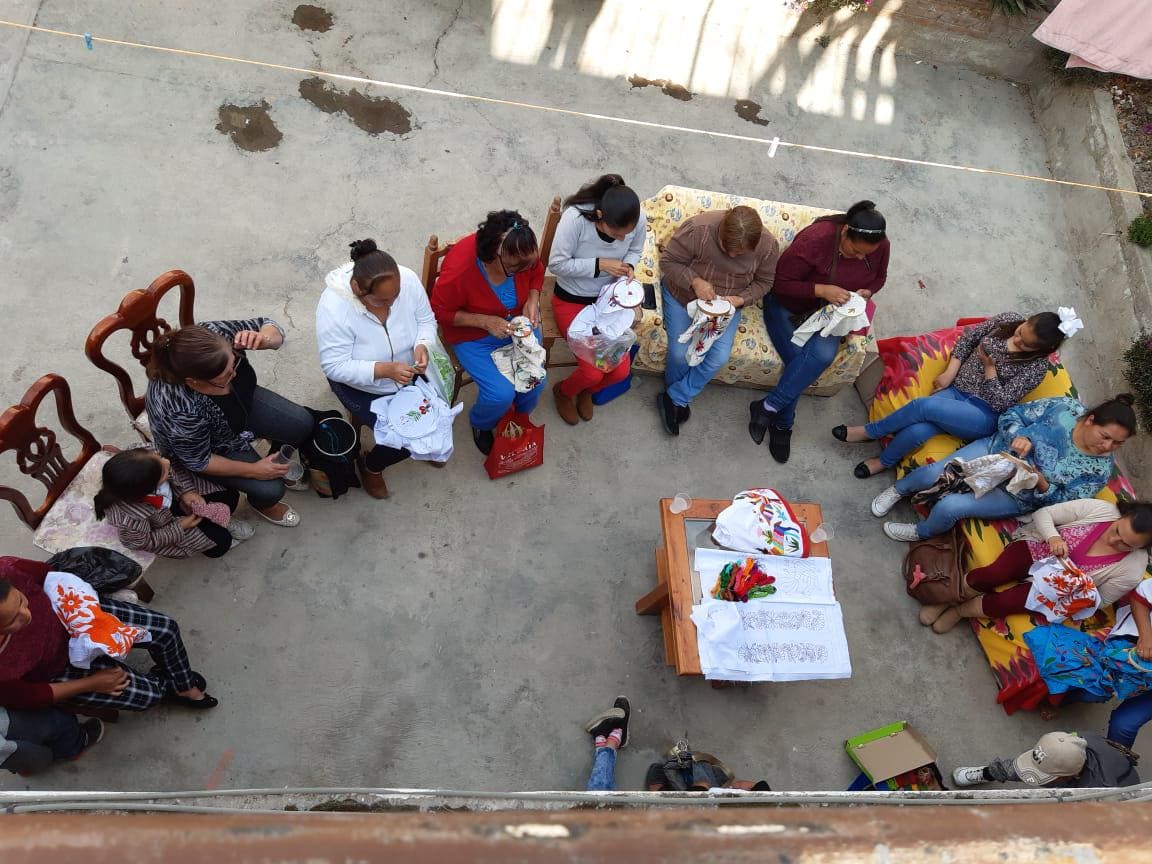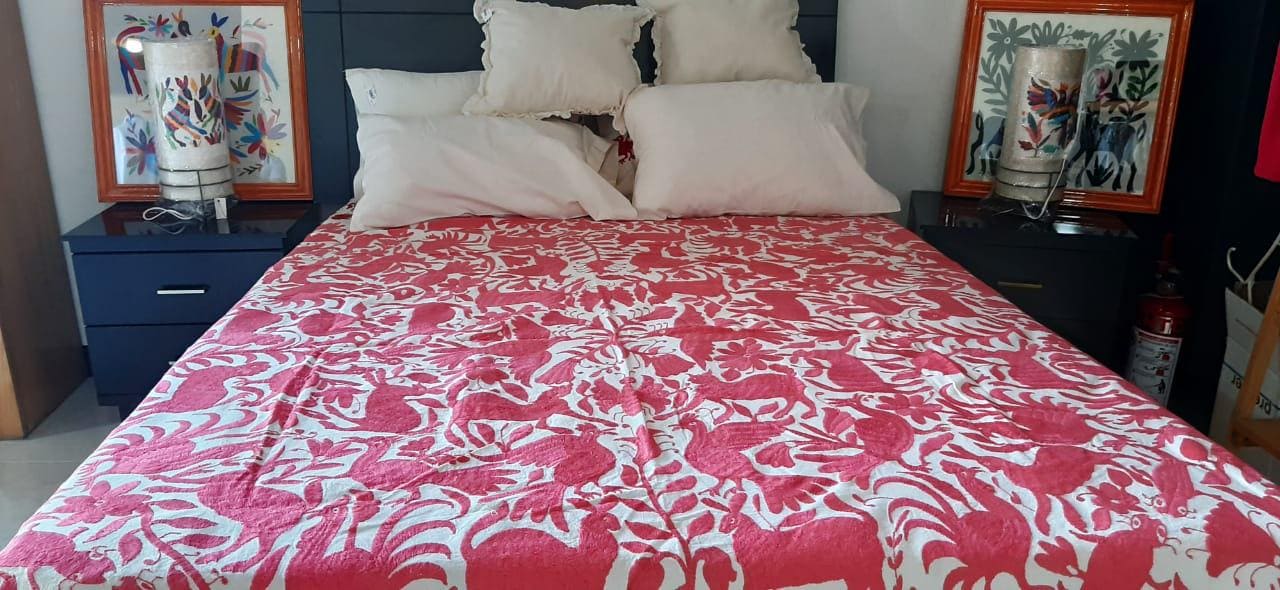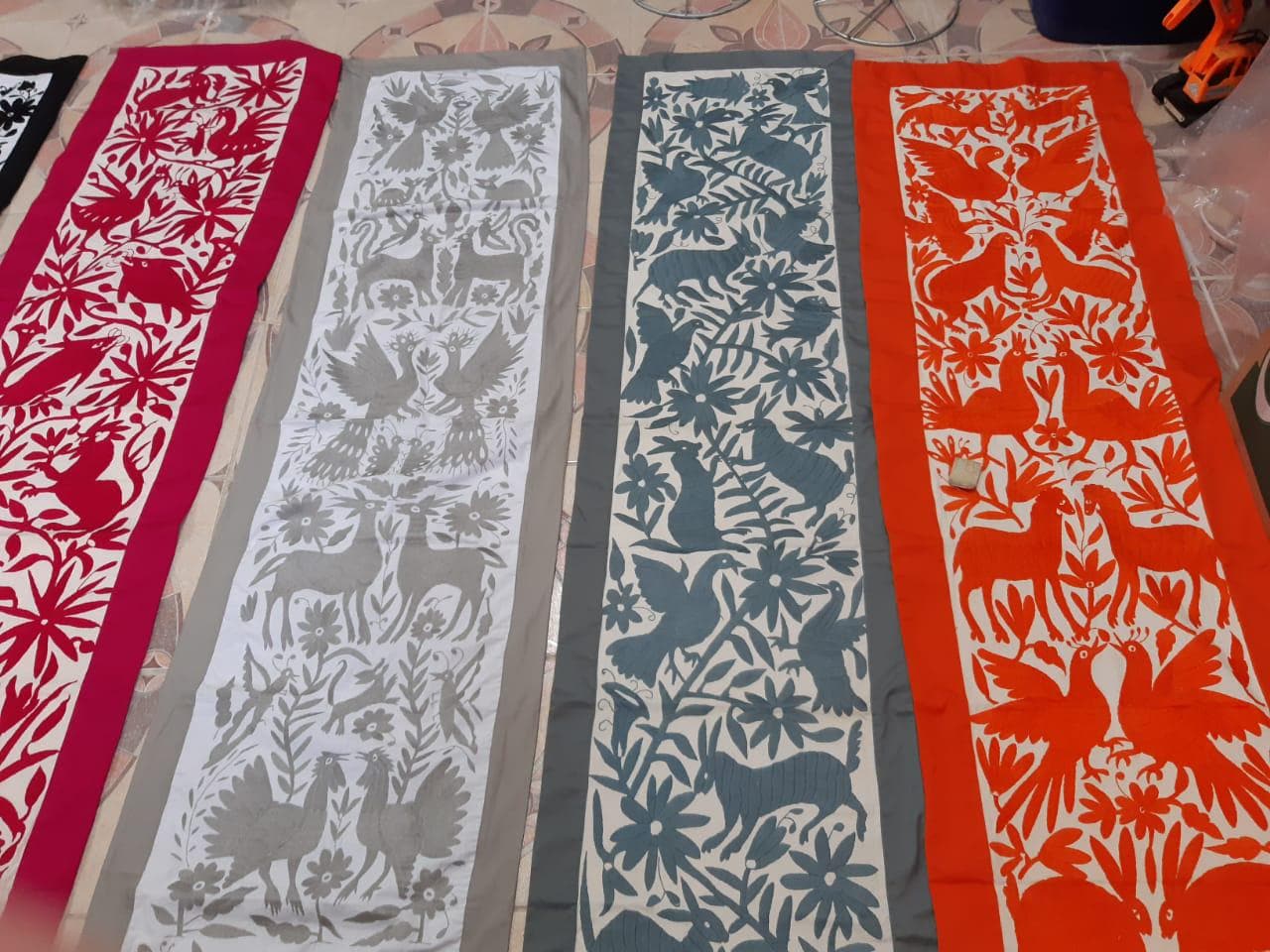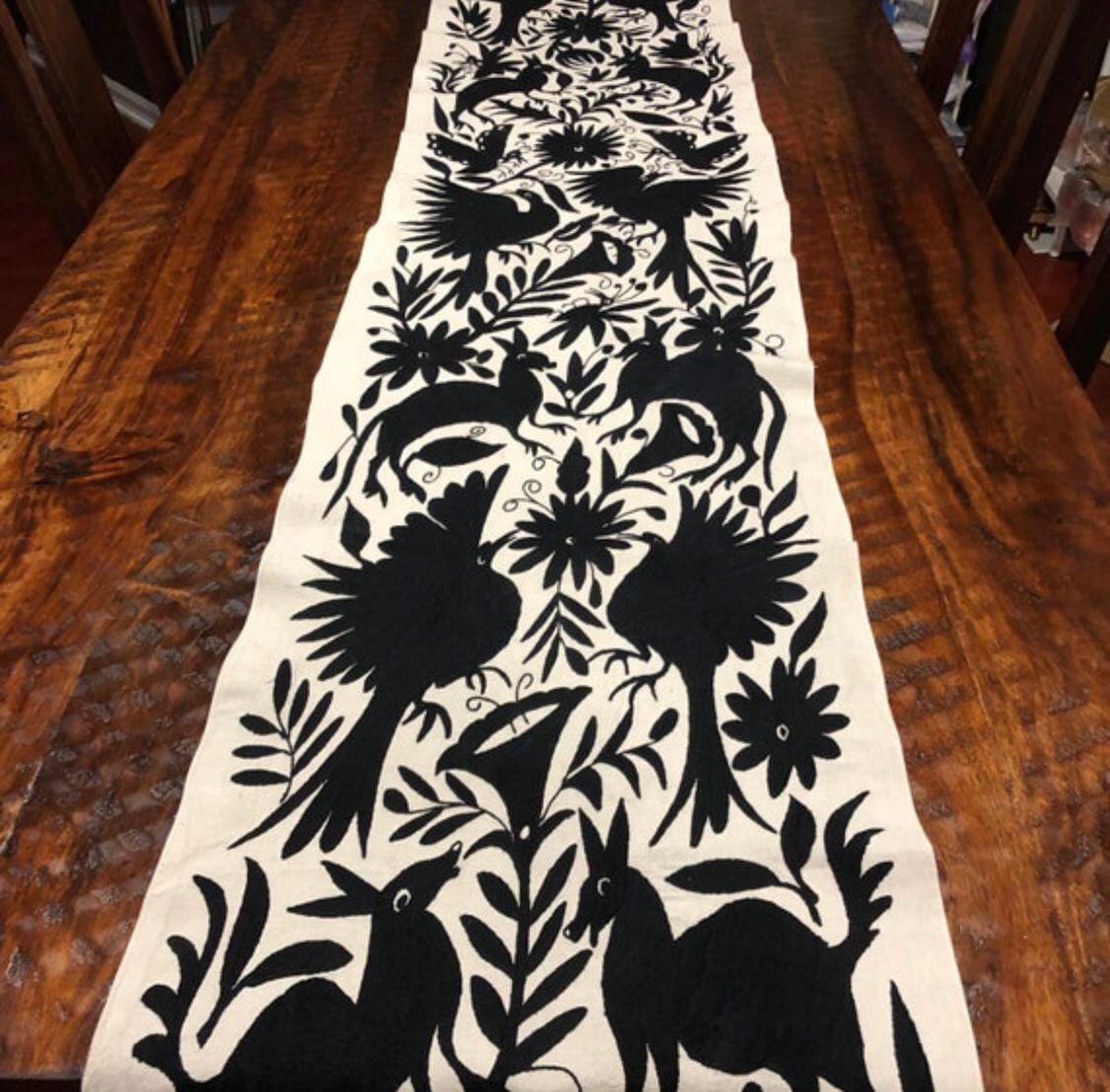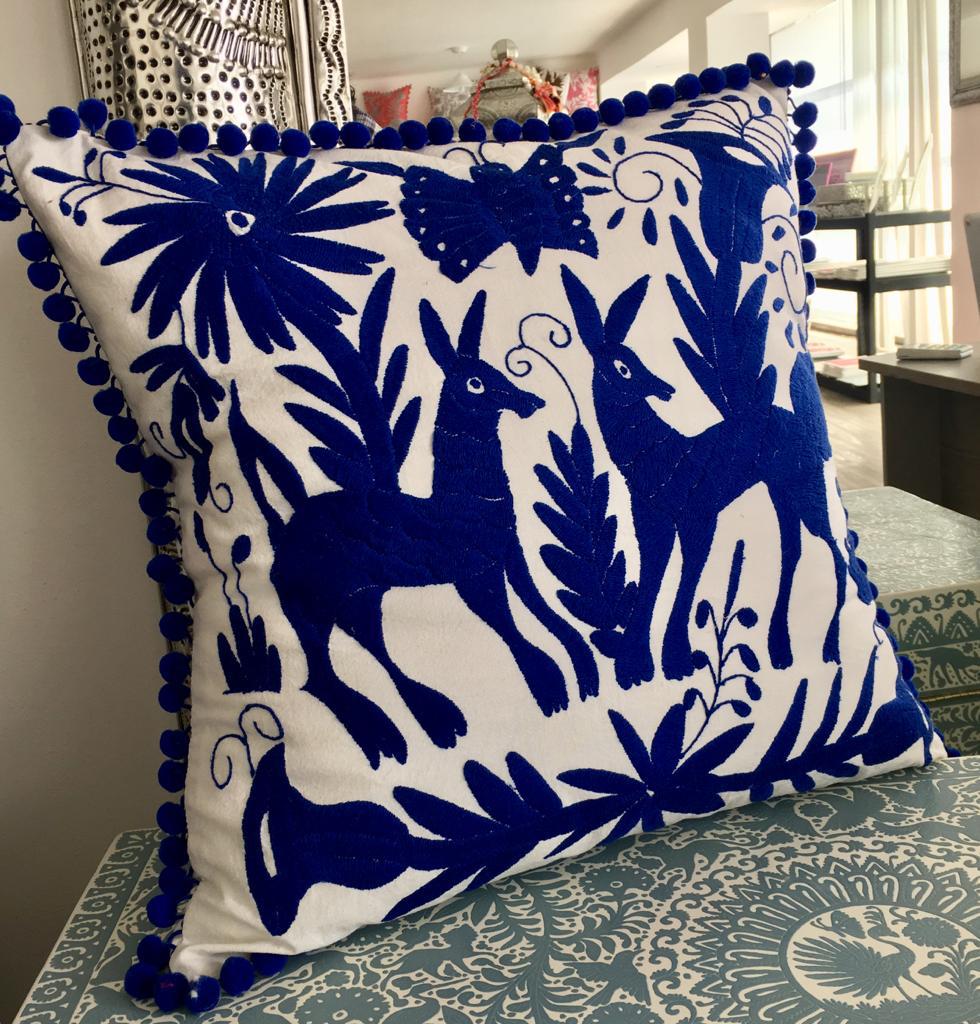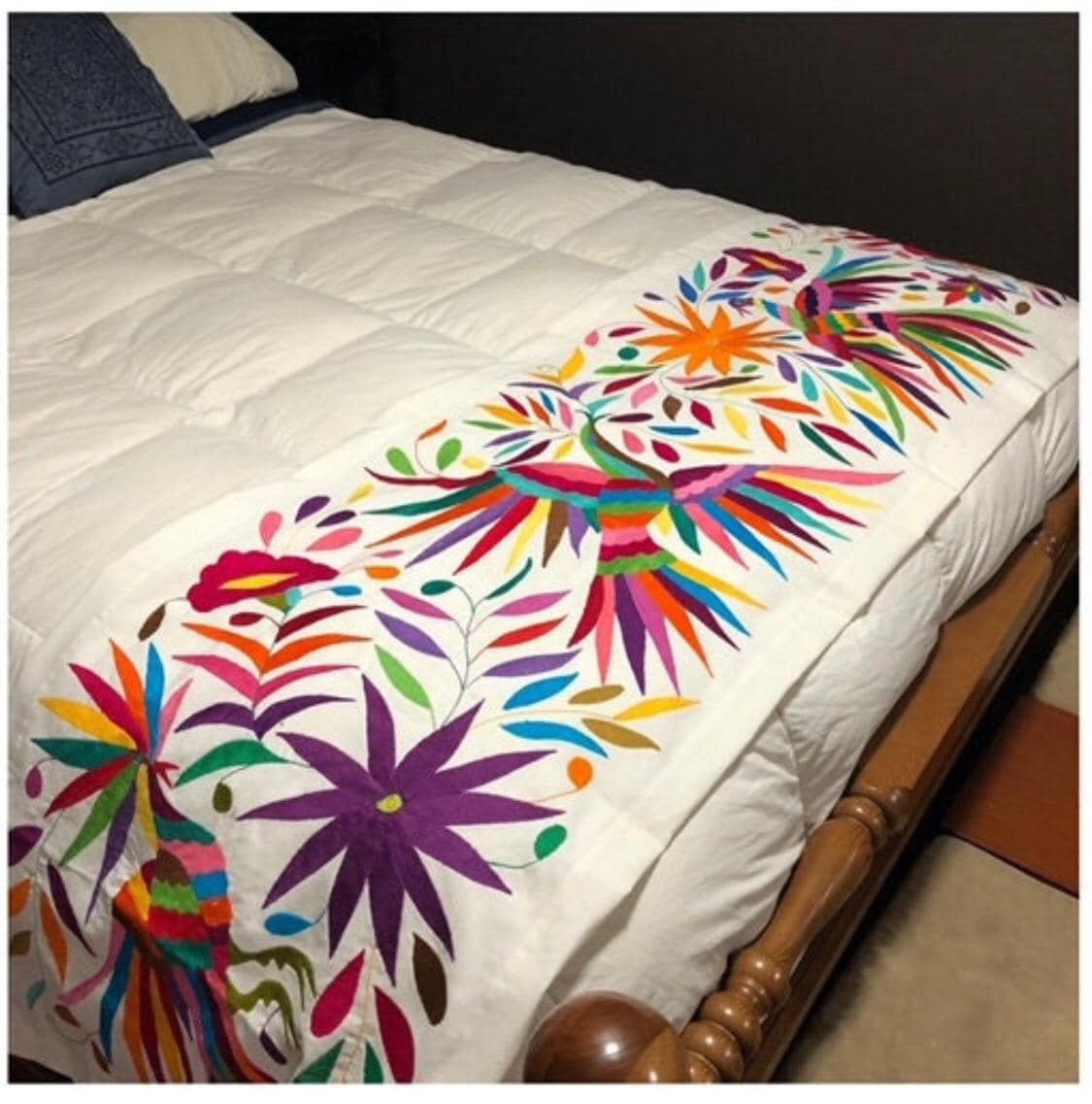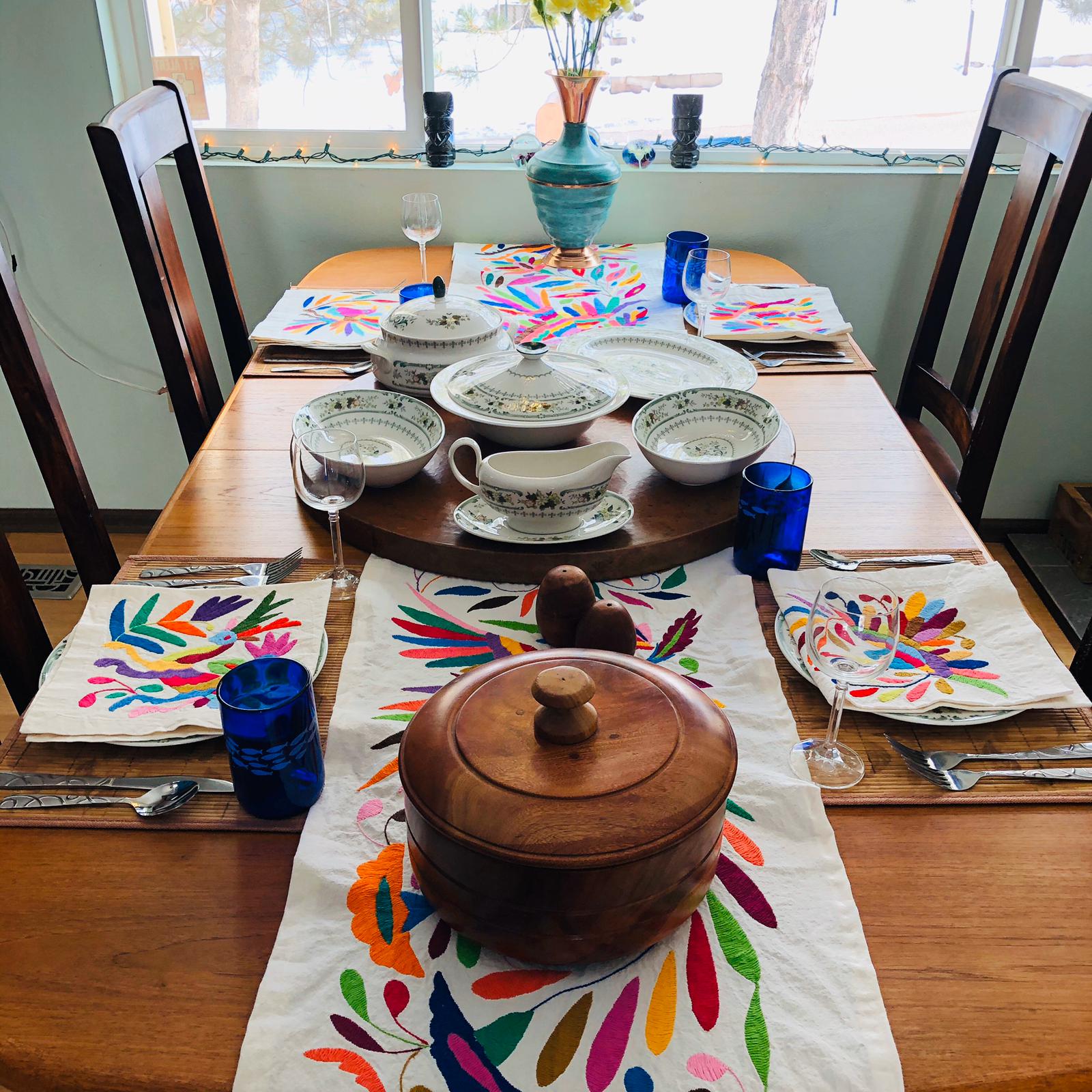The textiles of Tenango de Doria, Hidalgo, are more than just vibrant decorations—they are visual codices, preserving the history, cosmology, and daily life of the Indigenous Otomí (or Hñähñu) people. Known worldwide as Tenangos, these intricate embroideries are a celebrated form of Mexican cultural heritage, stitched one tiny knot at a time by the skilled hands of local women artisans. Here is an exploration of this captivating textile tradition and the incredible process behind its creation.
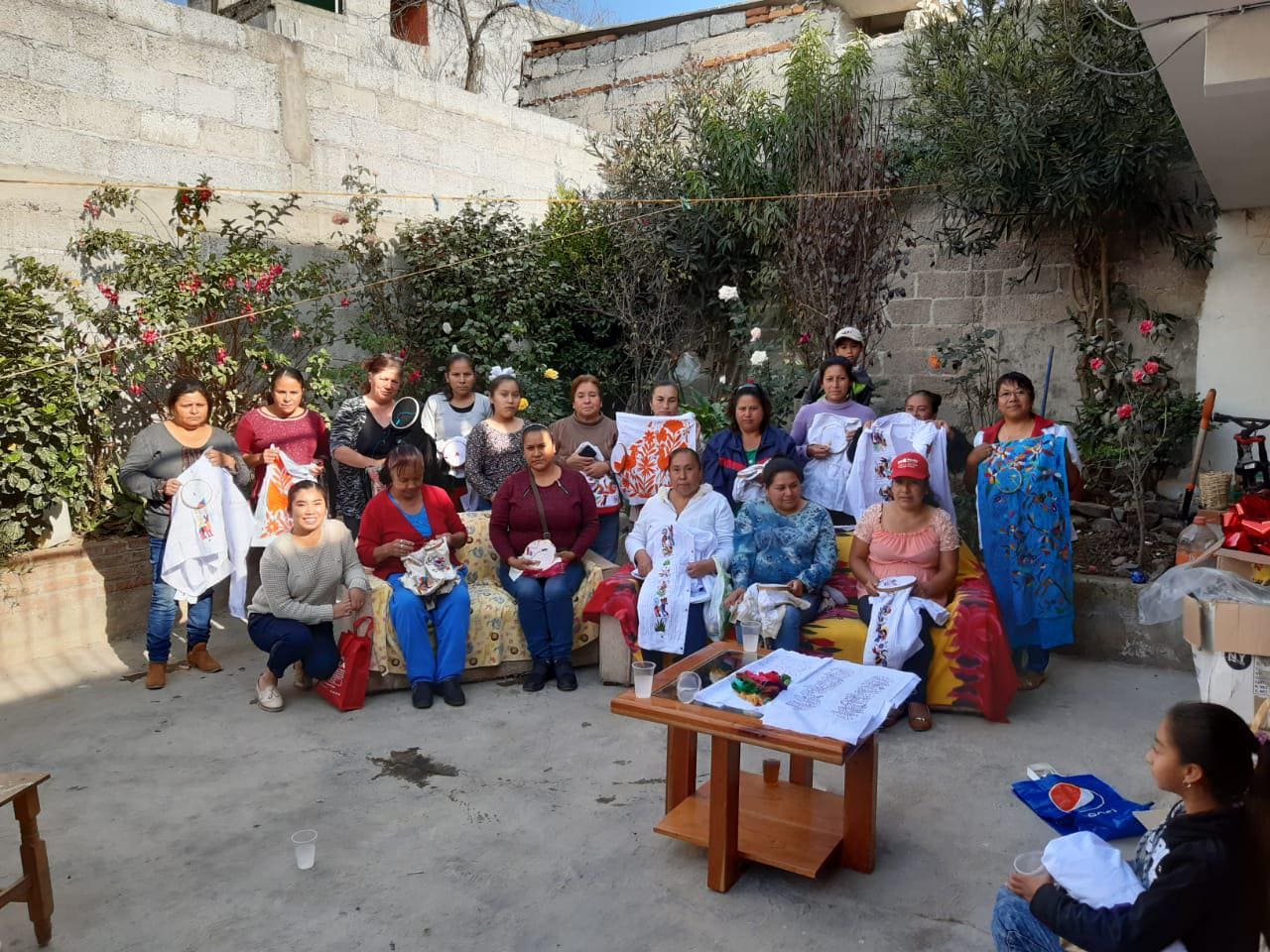
The Birth of the Tenango
The iconic style of the Tenango, characterized by its playful, whimsical figures and brilliant colors, is surprisingly modern. While the Otomí tradition of embroidery is centuries old, the distinct Tenango as we know it today emerged only in the 1960s. Its origin story is rooted in resilience. A severe drought devastated the region’s traditional subsistence agriculture, forcing the Otomí community, particularly the women, to find a new source of income. They took their ancestral embroidery skills, simplified the technique, and began creating pieces for commercial sale.
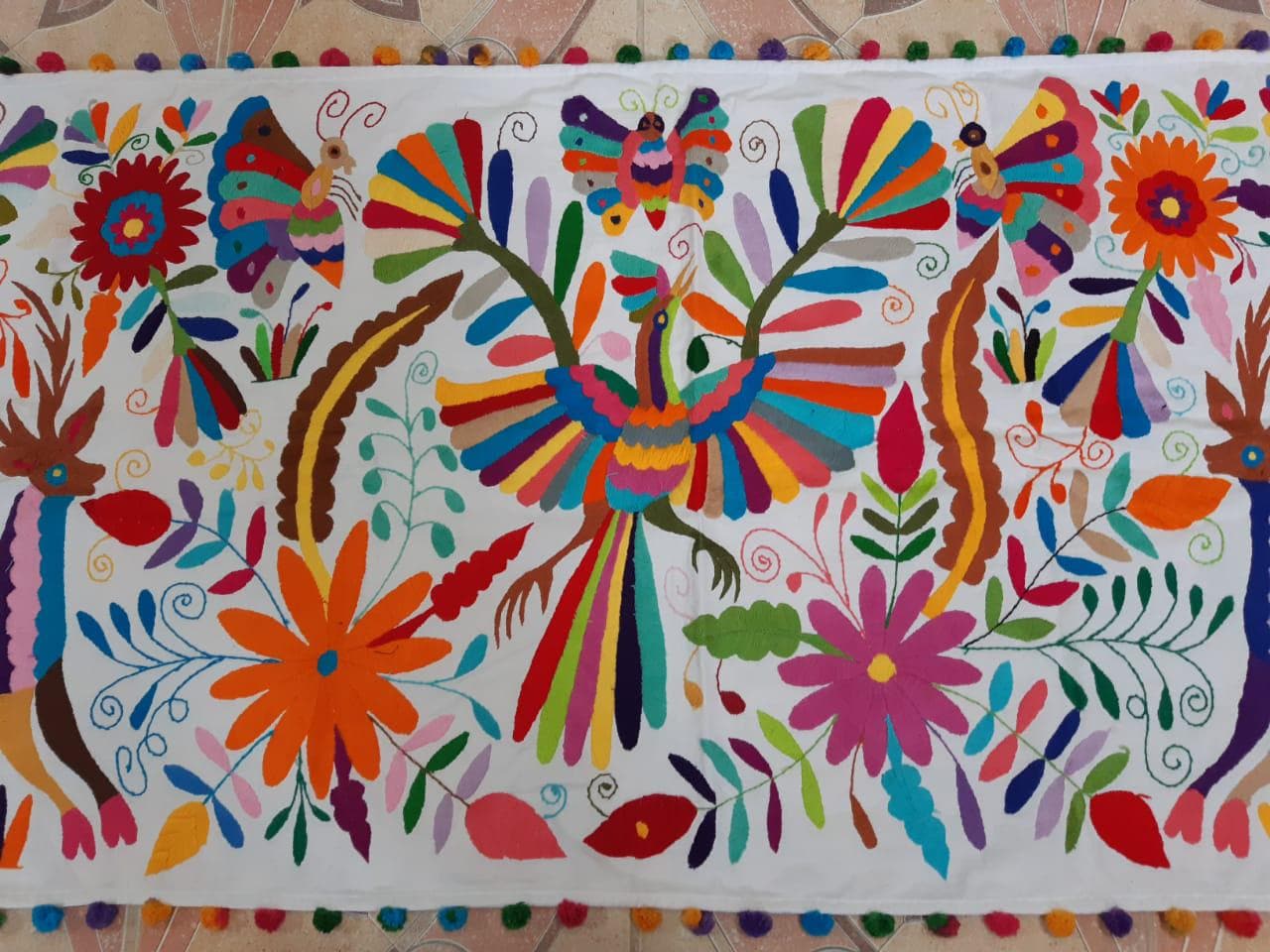
- Inspiration: The designs are deeply inspired by the region’s biodiversity and local folklore. Many motifs are said to replicate the stylized animals and figures found in prehistoric cave paintings in nearby sites like El Cirio.
- Narrative Art: Every Tenango tells a story. The detailed scenes depict local flora and fauna (like deer, rabbits, birds, and flowers), as well as significant events, festivals (like Day of the Dead), harvests, and family celebrations, serving as a cultural testimony for the community.
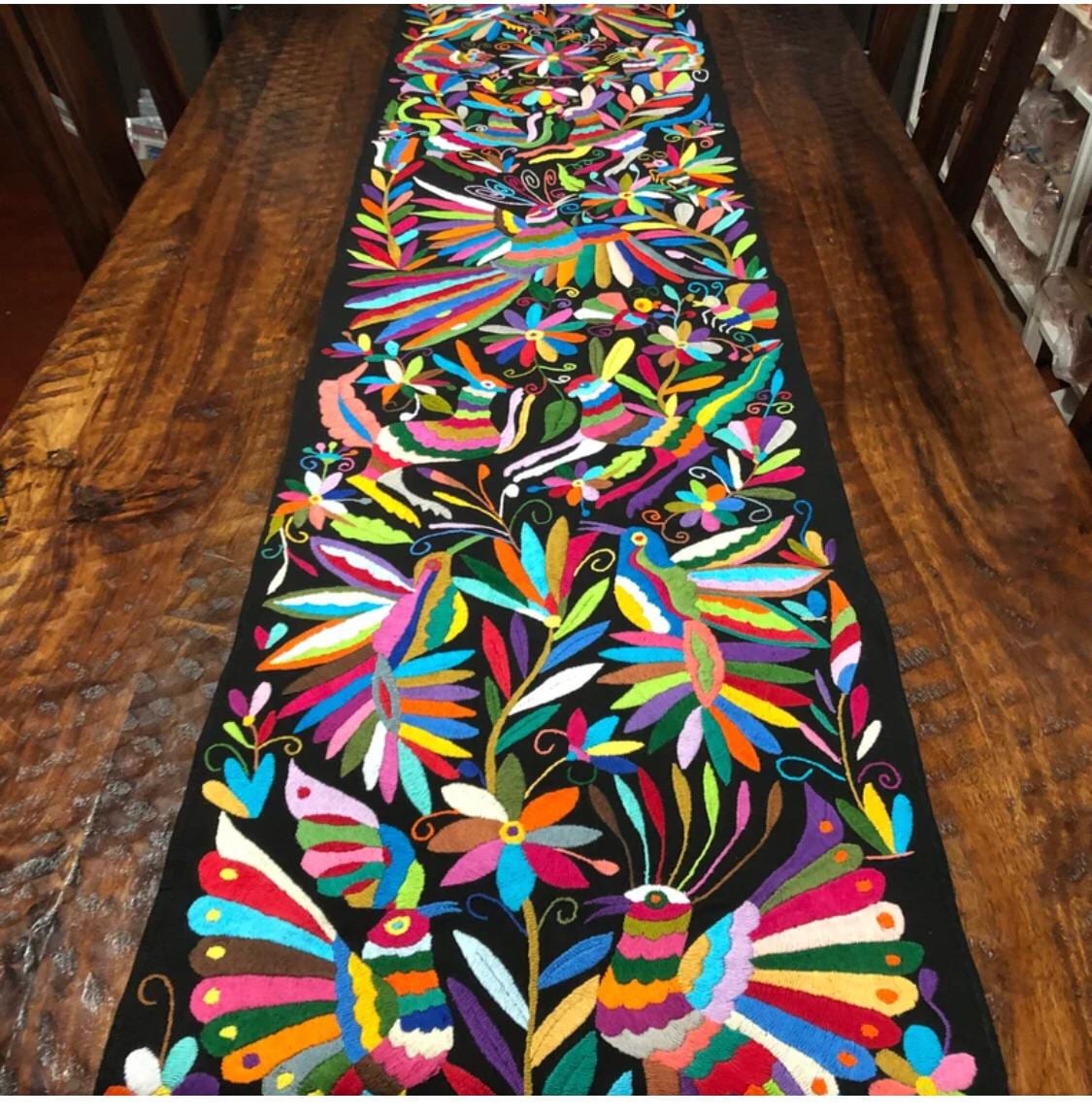
The Art and The Process
A true Tenango is a testament to patience and precision, involving two main phases, traditionally carried out on a white cotton cloth called manta.
1. The Freehand Drawing
Before a single thread is introduced, the entire composition is sketched onto the fabric, usually with a pencil. This is done entirely freehand, with no stencils or patterns, making every single piece truly unique. The artist uses their imagination to fill the canvas, balancing the figures in a symmetrical or clustered pattern that gives the finished work its dynamic energy.

2. The Pata de Gallo Stitch
The vibrant life of the Tenango comes from the meticulous embroidery. The artisans utilize a technique known locally as "Pata de Gallo" (Crow's Foot), or the inverted shadow stitch. As you can see in the video below, this is a labor-intensive process where small, tight, overlapping stitches are used to fill the entire outline of each figure with rich, dense color. Watch the process here:
Because each figure is filled solid with hand-stitched cotton thread, creating even a modest-sized piece, like a pillowcase or runner, can take weeks or even months of dedicated effort. Larger works, such as bedspreads or tablecloths, may take several people and over a year to complete.
Supporting the Artisans: Fair Trade at Lunazul Gallery
When you purchase a Tenango, you are not just acquiring a beautiful textile; you are investing in the preservation of a profound cultural tradition. Given the immense labor and artistry involved, fair compensation is essential. Here at Lunazul Gallery, we are proud to offer a wide selection of these incredible textiles and are committed to fair trade practices. We ensure the Otomí artisans receive equitable and direct pay for their priceless work, securing a sustainable future for their families and helping this vital art continue to thrive for generations.
